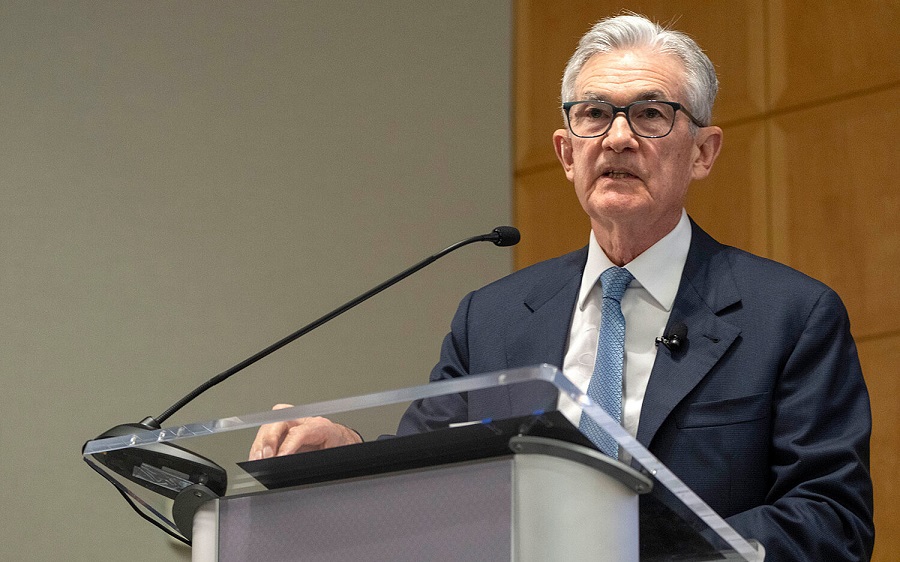What if FED will not cut rates this year?
We’ve already seen in the space of a few short weeks the market adjust its expectations for rate cuts this year from around six 25-bps reductions to four.

Fed signals "patience" on rate cuts as data disappoints
>> Outlook for central banks’s monetary policy in 2024
That’s not it the forecast of many analysts. But we’ve already seen in the space of a few short weeks the market adjust its expectations for rate cuts this year from around six 25-bps reductions to four. More bad inflation data could see this melt away some more. So, what would happen if market pricing shifts to assume no rate cuts at all this year - and the Fed duly obliged?
The first thing to say, of course, that this would still be a significant surprise to the market, not least because the median FOMC member forecast is for three rate cuts this year with all but two of the nineteen FOMC members forecasting a cut of some sort. But, as the FOMC members themselves are keen to stress, the forecasts are not some sort of a commitment.
What’s more, it is not as if these forecasts from the FOMC have been correct in the past, which is unsurprising, especially recently, when we’ve seen huge shocks such as the pandemic or the war in Ukraine. Nonetheless, the market does still tend to treat them as almost a commitment. It is one reason why Bank of England MPC members argued just this week against producing such DOTs plot forecasts in the UK. So, no rate cuts this year would be a shock to the market but just ‘why’ rates might remain unchanged would probably have a bearing on the market reaction.
For instance, if it is because inflation surged again, despite weaker growth, the adverse impact on asset prices like bonds and stocks, or the lift to the US dollar, would be greater than if the rate stability happens because inflation gets ‘stuck’ at levels above the target while the economy remains robust. Much will also depend on the responses of others.
If there was a common factor present, such as a surge in inflation across G10 countries, then we might imagine the likes of the ECB, BoE and more would also keep rates unchanged, or even hike again. But if the inflation difficulty, and hence rate stability, is specific to the US and does not prevent rate cuts elsewhere, then global asset prices might prove less vulnerable, but the US dollar would likely be even stronger than the case of policy holds across G10 through this year.
There could also be a significant difference between the vulnerability of G10 countries to Fed policy inaction and those of emerging market countries. Naturally we’d assume a far bigger hit for EM, not least because the room for rate cuts could be stymied, or even ruled out completely, as central banks in EN countries are more likely to be mindful of the potential cost in terms of local currency weakness.
>> Will the FED lower rates regardless of the inflation target?
Clearly none of these scenarios suggests that there would be a good outcome from the Fed’s failure to cut rates this year. Instead, what we are talking about is different levels of pain for asset prices and currencies – and we’ve not even got to the scenario whereby the Fed has to start rate hikes again. Such an outcome would undoubtedly crater asset prices and send the US dollar soaring. But even on a more benign scenario that sees the Fed keep rates on hold this year, we’d still see 10-year treasury yields take out the 5% level and euro/US dollar slump to parity, or slightly below.
Mr. Steve Barrow, Head of the Standard Bank G10 Strategy, said such rate stability from the Fed would increase the risks of financial stress, particularly in those instances where debt rollovers are substantial and have previously been assumed to benefit from a decline in Fed policy rates and yields. But while such risks exist, and while some asset prices seem somewhat stretched or even overvalued, like US equities, we are not tempted to think that an absence of any rate cuts from the Fed this year would push financial markets into any sort of crisis situation.
As we mentioned at the start, the market has already removed quite a bit of Fed easing previously priced in for 2024 and the cost has been relatively modest. In fact, the US dollar has hardly moved at all. “We do think it will move (higher) if the Fed leaves policy unchanged this year but do not anticipate an unmitigated surge against G10 currencies”, Mr. Steve Barrow said.








